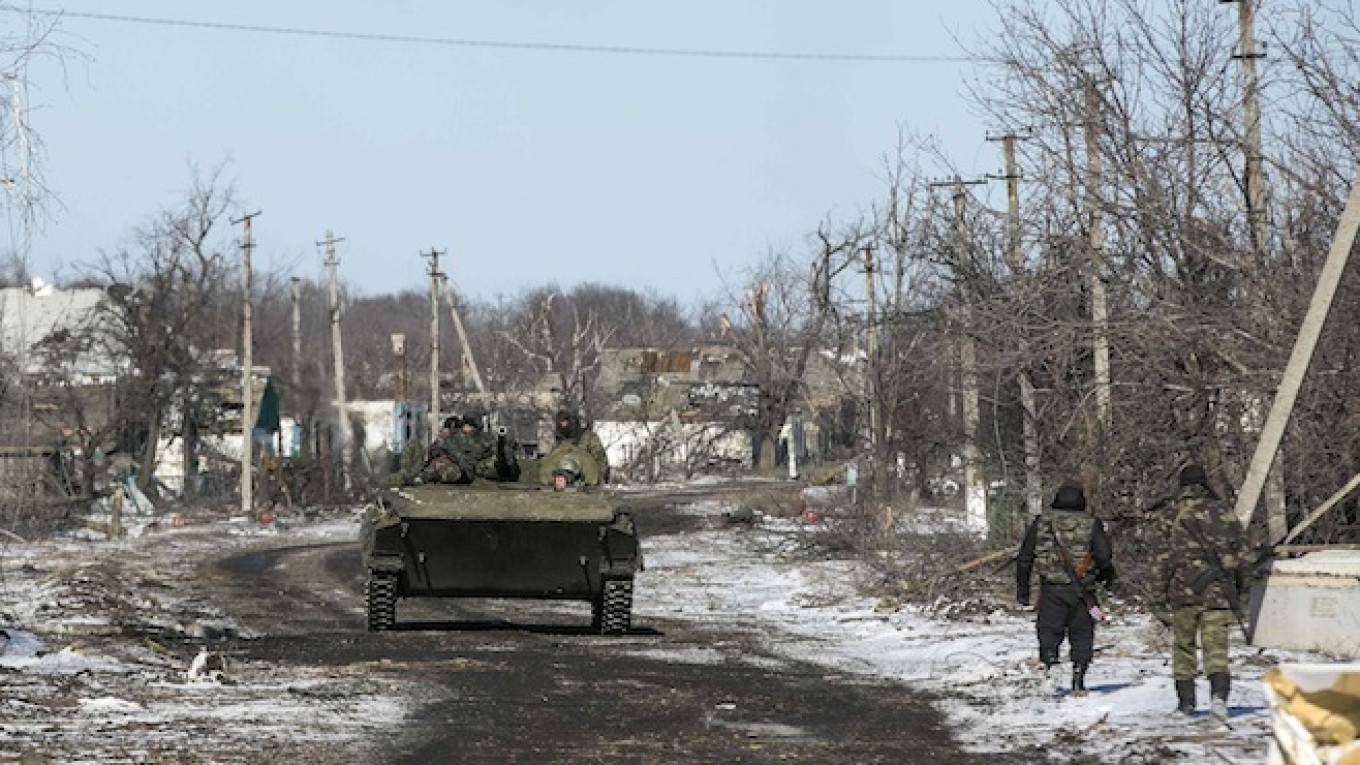Uneasy calm and domesticity have settled over rebel positions in the ruins of front-line towns in east Ukraine as steps are taken to observe a fragile cease-fire that each side expects the other to violate with a fresh offensive.
Near the charred shell of a tank, destroyed in a recent battle in the village of Molochnoye, a woman clad in camouflage fatigues cooked beetroot soup, while rebel fighters fashioned an empty ammunition box into a sidecar for an old Soviet motorbike.
Fighting, which virtually razed the nearby towns of Debaltseve and Vuhlehirsk, has died down with a three-week-old cease-fire broadly holding. But pro-Russian separatists are on guard in case violence flares again.
Local rebel commander Vyacheslav, nicknamed Kot (Cat), said he had no desire to launch further attacks, but wished to defend his land. "I don't need to kill you at all," he said, talking in Ukrainian as if addressing government troops directly.
"If you think that I want to take a look at your houses, that's not the deal. I just need my house to be safe and my wife to be at home and to cook food for me," he said, speaking outside the local rebel headquarters, which had a collapsed roof and two armored personnel carriers parked in the backyard.
Under the terms of the peace deal agreed on Feb. 12, pro-Moscow rebels and Ukrainian government forces were supposed to pull heavy artillery back from front lines to end a conflict that has killed nearly 6,000 people since last April.
Both sides have shown convoys of heavy arms being withdrawn, but each accuses the other of leaving some large weapons near front-line positions.
Opposing Trenches Not Far Away
From hilltop outposts near Molochnoye, rebels observed Ukrainian positions around Novoluhanske, a government-controlled town. Rebel trenches on one of the hills seen by Reuters were manned by three fighters.
They gave orders to keep heads low as if prepared for enemy attack, but only one of them had his helmet on.
Another fighter peered through his binoculars at sandbags on the Ukrainian side of the front about 2 kilometers (1.2 miles) away. Cases of at least five used anti-tank guided missiles lay on the ground nearby. More rebels could be seen on the next hill.
"Yesterday a diversionary group came and checked us out," a gunman, who gave his name as Andrei, said as he squatted on the grass near a trench. "We held them back with suppressive fire from light rifles. We mainly use Pokemon," he said, using a nickname for PKM, or Kalashnikov machine guns.
A few bangs and shots could be heard in the area over the weekend, but it was not clear which side was firing or at what target.
In Molochnoye, a further 2 kilometers from the front line, a T-64 tank was parked near an old one-storey house. A gas mask covered the end of the barrel and a camouflage blanket was draped over its turret. Within 24 hours the tank did not change position.
"Don't take pictures of the tank. It's all covered. We don't use it," a rebel said, coming out of the house. "Its name is Victoria, after my wife."
A Message from The Moscow Times:
Dear readers,
We are facing unprecedented challenges. Russia's Prosecutor General's Office has designated The Moscow Times as an "undesirable" organization, criminalizing our work and putting our staff at risk of prosecution. This follows our earlier unjust labeling as a "foreign agent."
These actions are direct attempts to silence independent journalism in Russia. The authorities claim our work "discredits the decisions of the Russian leadership." We see things differently: we strive to provide accurate, unbiased reporting on Russia.
We, the journalists of The Moscow Times, refuse to be silenced. But to continue our work, we need your help.
Your support, no matter how small, makes a world of difference. If you can, please support us monthly starting from just $2. It's quick to set up, and every contribution makes a significant impact.
By supporting The Moscow Times, you're defending open, independent journalism in the face of repression. Thank you for standing with us.
Remind me later.


